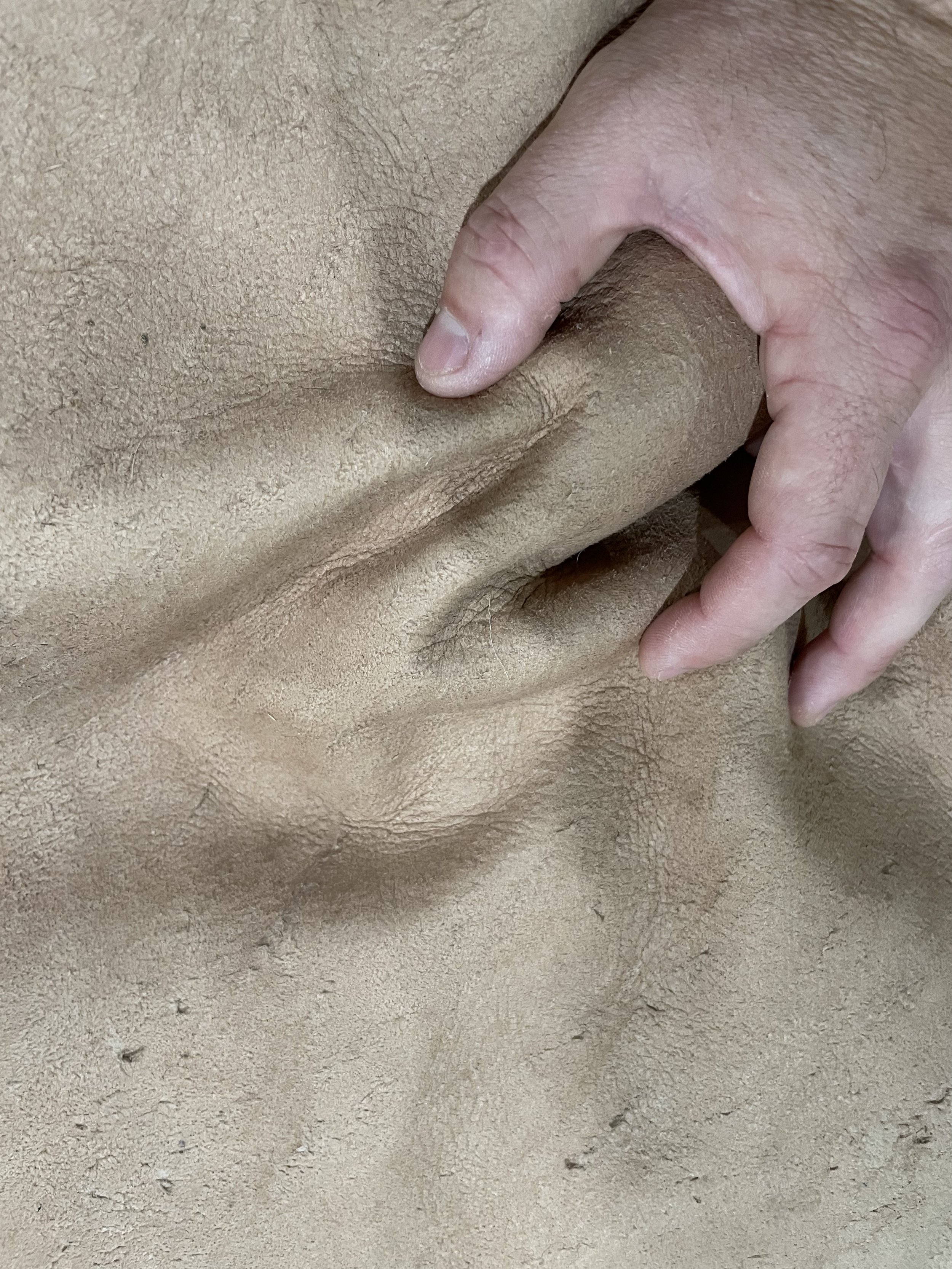
Tanning as Stewards
Every decision we make in our tannery is one that we hope maximizes working WITH the product in front of us and the environment around us. This means we try to avoid chemicals we wouldn’t want in products for ourselves or to dispose of on our own land. This also means we get to know the hide we are working with and do right by that product.
About Tanning Agents
-
Our preferred tannin source which utilizes leaves that can be sustainably harvested from sumac bushes which are brewed into a strong tea full of tannins. Sumac tannin is known for producing soft and light-colored leather and imparting minimal color to the wool. See our blog post to learn more about why this is our preferred method for how it fits into land stewardship.
-
Mimosa tannin comes from the Black Wattle (Acacia mearnsii) tree bark and is the most common tannin used by natural sheepskin tanneries. It produces a soft and supple leather and can impart a slightly rosy color to the leather and wool. As with sumac, we manage our process very carefully to minimize the color imparted to the wool. While an excellent tannin, the Black Wattle is native to Australia and is primarily grown in plantations in South America and South Africa where trees are harvested in 7-10 year increments.
-
Tannins from Chestnut wood are our preferred tanning for tanning leather. Chestnut produces a moderately dense leather with good flexibility and excellent feel. The resulting color on the grain side can range from light to moderate golden brown. Currently, our chestnut tannin is imported, however we are exploring options for harvesting it within the Great Lakes region.
Features of the end product
-
See more in our FAQs. Veg-tanned sheepskins are machine washable in cold water, however we recommend spot cleaning and using a wool specific detergent as needed.
-
Veg-tanned sheepskins and leather will last for generations, if properly cared for.
-
Veg-tanned leather and sheepskins are excellent for artisans and crafters who desire high quality leather for projects. Sumac and mimosa tanned leathers are light colored in order to accept a range of dyes.
Environmental Stewardship
-
The modern tanning industry relies heavily on chromium salts and other harmful chemicals like formaldehyde. Many superfund sites in the United States were old tanneries (several here in Michigan even). For this reason, most tanning has moved overseas to countries with lax regulations, causing direct harm to the tanners and communities they are located in.
As a natural tannery utilizing only veg-tanning methods, we are able to avoid most of these harmful components. The primary components left over after our tanning process are natural tannins, biodegradable detergent and various mineral salts. The tannins and detergents can be decomposed in our aerated wastewater system, and we are working on utilizing salts which contain agricultural fertilizers such as potassium, calcium, and sulfur so that the net impact of our waste is actually good for the land and pastures.
-
The vegetable tanning method is millenia old and utilizes natural organic matter to tan the sheepskins instead of chromium, formaldehyde or metals. This creates products that are safer for our communities and the by-products are more readily recycled back into natural ecological systems. Our favorite tanning agent- sumac- goes a step further in that the harvest of the tanning agent involves harvesting not the entire plant but rather just the leaves.



